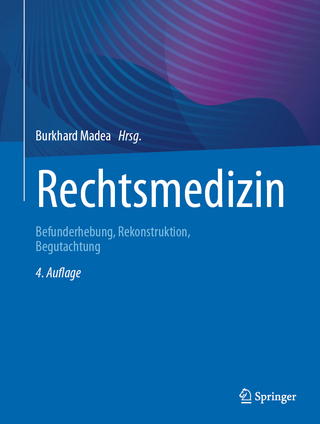
The Balmis Expedition
The Spanish Empire's War against Smallpox
Seiten
2024
Texas Christian University Press (Verlag)
978-0-87565-857-5 (ISBN)
Texas Christian University Press (Verlag)
978-0-87565-857-5 (ISBN)
In the middle of the Napoleonic Wars, King Charles IV of Spain funded and dispatched a humanitarian mission aimed at inoculating all of the imperial colonies in Latin America and Asia. Known as the Balmis Expedition, it was launched in 1803 and utilized Edward Jenner’s new method by which to vaccinate people against smallpox.
While the Spanish are often remembered for bringing smallpox and other diseases to the New World, little attention is paid to their efforts to eradicate one of the greatest killers in human history. In the middle of the Napoleonic Wars, King Charles IV funded and dispatched a humanitarian mission aimed at inoculating all of the imperial colonies in Latin America and Asia. Known as the Balmis Expedition, it was launched in 1803 and utilized Edward Jenner's new method by which to vaccinate people against smallpox. Using a human daisy chain of two dozen orphans, Dr. Francisco Balmis was able to bring the live virus across the Atlantic Ocean and later the Pacific. Yet, despite saving hundreds of thousands of lives, the history of the expedition was largely forgotten for the next two hundred years. Many at the time resented the Scientific Absolutism that the mission represented, doing away with old methods and cures, as well as its economic implications. Finally, the onset of revolutions in the region only a few years later resulted in a rewriting of history which necessarily eliminated any positive accomplishments of the Bourbons. The Expedition became yet another victim of the Black Legend in Latin American historiography. A voyage which Jenner himself once called "an example of philanthropy so noble, so extensive," and which served as the precursor for future world efforts at disease management, became forgotten. Yet despite this, its effects on the population and on public health efforts in the region were profound. The Balmis Expedition represented a perfect confluence of the tenets of the Scientific Revolution, the Enlightenment, and Absolutism, and bridged the divided between medieval and modern public health management.
While the Spanish are often remembered for bringing smallpox and other diseases to the New World, little attention is paid to their efforts to eradicate one of the greatest killers in human history. In the middle of the Napoleonic Wars, King Charles IV funded and dispatched a humanitarian mission aimed at inoculating all of the imperial colonies in Latin America and Asia. Known as the Balmis Expedition, it was launched in 1803 and utilized Edward Jenner's new method by which to vaccinate people against smallpox. Using a human daisy chain of two dozen orphans, Dr. Francisco Balmis was able to bring the live virus across the Atlantic Ocean and later the Pacific. Yet, despite saving hundreds of thousands of lives, the history of the expedition was largely forgotten for the next two hundred years. Many at the time resented the Scientific Absolutism that the mission represented, doing away with old methods and cures, as well as its economic implications. Finally, the onset of revolutions in the region only a few years later resulted in a rewriting of history which necessarily eliminated any positive accomplishments of the Bourbons. The Expedition became yet another victim of the Black Legend in Latin American historiography. A voyage which Jenner himself once called "an example of philanthropy so noble, so extensive," and which served as the precursor for future world efforts at disease management, became forgotten. Yet despite this, its effects on the population and on public health efforts in the region were profound. The Balmis Expedition represented a perfect confluence of the tenets of the Scientific Revolution, the Enlightenment, and Absolutism, and bridged the divided between medieval and modern public health management.
David Petriello received his doctorate from St. John’s University. He has authored a dozen books and articles on subjects ranging from disease and civilization, to American conservative politics, and military history. His most notable works are Bacteria and Bayonets, A Pestilence on Pennsylvania Avenue, and The Republican Party and the Growth of China. He teaches at Caldwell University in New Jersey.
| Erscheinungsdatum | 28.10.2023 |
|---|---|
| Verlagsort | Fort Worth |
| Sprache | englisch |
| Maße | 152 x 229 mm |
| Themenwelt | Geisteswissenschaften ► Geschichte ► Allgemeine Geschichte |
| Geisteswissenschaften ► Geschichte ► Regional- / Ländergeschichte | |
| Studium ► 2. Studienabschnitt (Klinik) ► Rechtsmedizin | |
| Studium ► Querschnittsbereiche ► Geschichte / Ethik der Medizin | |
| Naturwissenschaften ► Geowissenschaften ► Geografie / Kartografie | |
| ISBN-10 | 0-87565-857-1 / 0875658571 |
| ISBN-13 | 978-0-87565-857-5 / 9780875658575 |
| Zustand | Neuware |
| Haben Sie eine Frage zum Produkt? |
Mehr entdecken
aus dem Bereich
aus dem Bereich
Befunderhebung, Rekonstruktion, Begutachtung
Buch | Hardcover (2024)
Springer (Verlag)
199,99 €
Ein praktisches Handbuch für Ärzte und Juristen
Buch | Hardcover (2020)
Urban & Fischer in Elsevier (Verlag)
240,00 €


